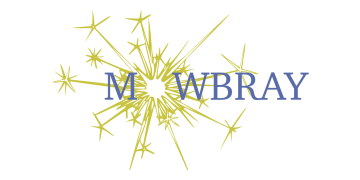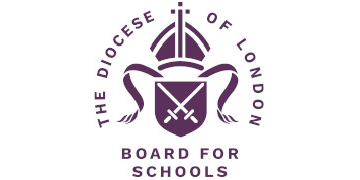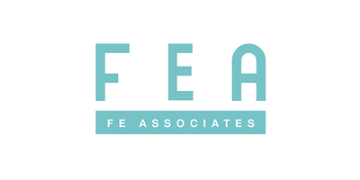At the British Educational Research Association Conference in 2012, I posed a deliberately provocative question: Is teaching still a profession in England? This question continues to resonate over a decade later, not least because new challenges are causing us to rethink old assumptions.
Increased prescription, partly driven by ongoing recruitment and workload difficulties. Increased surveillance too, partly driven by accountability measures. The emergence of AI. Changing political priorities. New ways of working emerging since the pandemic. These add up to a very different landscape from when I first presented my provocation.
Philosopher Thomas Kuhn’s The Structure of Scientific Revolutions provides a helpful frame for understanding this period of flux. Kuhn argued that disciplines evolve through paradigm shifts, periods of consensus followed by crises, rupture and the emergence of new dominant models.
Through this lens, while teaching in England appears caught in a perpetual state of rethinking the ‘rules of the game’ (not helped by successive governments’ disruptive attempts to impose order), we can see (or at least hope) that what feels like chaos is in fact the birth pangs of a new and stable professional paradigm.
But what might this new paradigm look like?
A mixed economy
Over the past 20 years, we’ve seen the abolition of the General Teaching Council and the Training and Development Agency (TDA), the emergence of academies, the marginalisation of universities in teacher education and development, alongside the proliferation of alternative ‘training routes’ to becoming a teacher.
Where once was a relatively stable identity of the profession, this fragmentation means there is no clear consensus over what constitutes a teaching profession and no clear destination to aim for.
While the current Labour government has (rather symbolically) reinstated Qualified Teacher Status (QTS) for academies, its broader ambitions remain opaque. Likewise, the pledge of 6,500 new teachers may superficially address one obvious challenge but fails to resolve the deeper questions.
What kinds of teachers do we need? How do we best prepare them? Is our aim still to build a coherent, reflective, critical and insightful profession, or to continue expanding a technically skilled, disposable workforce optimised for ‘delivery’?
The answer to thelast question may be both. Indeed, we are already witnessing the emergence of something like a mixed economy of teaching.
We still have those who enter the classroom through traditional, ‘professional teacher education routes and are (hopefully) able to demonstrate agency in their teaching and ongoing development.
But we are also seeing roles that increasingly resemble technicians or qualified tradespeople, employed to ‘deliver’ scripted activities while operating within tightly defined frameworks and routines.
Drawing parallels
Such bifurcation of roles has interesting parallels with developments in healthcare. The rise of physician associates in GP surgeries has extended capacity but raises questions about trust, expertise, accountability and expectation. This disparity between roles raises concerns about depth of knowledge, diagnostic ability and preparedness for complex cases, all which could equally apply to school contexts.
If schools follow a similar path, it can only raise the same concerns. But we won’t achieve a new, stable and long-term status quo without accepting the reality as it presents, no more than by allowing this bifurcation to happen by stealth.
Accepting that previous conceptualisations of teaching as a profession may be unachievable and unsustainable, we now have an opportunity to consider the alternatives.
In essence, could a technically trained, differentiated and distributed workforce meet the needs of most learners, while more complex needs (behavioural, emotional, SEND and others) are met by ‘lead professionals’?
Inevitably, deeper questions immediately arise: Would parents and unions accept ‘technicians’ in classrooms? And if so, in which classrooms and could this be achieved equitably?
Meanwhile, with the number of pupils requiring SEND support rising and behaviour-related exclusions increasing, the demands on teachers appear to be intensifying. These are not challenges that can be met by technicians, but nor, arguably, can they be met by teachers as currently conceived.
A critical juncture
It’s not far-fetched to imagine that professional roles that require deep academic development, agency, pedagogical judgment, contextual understanding and adaptive expertise may be just one dimension of future student-facing roles.
The key issue is that the parallel shift towards technically-skilled, delivery-focused teaching in many classrooms only resembles a paradigm shift. The genuine article would not arise from external political pressure but from ongoing professional dialogue to navigate and resolve challenges and critique.
And so Labour stands at a critical juncture. It must decide whether to aim to restore coherence and ambition to the teaching profession, or to continue with reactive policies designed to patch over the system’s fragmentation and deliver short-term, politically self-serving results.
From a Kuhnian perspective, the teaching profession is locked in a crisis of competing paradigms, denied the opportunity to shape its own evolution through professional consensus, and instead subject to change driven by political expediency.
As with all provocations, the profession versus trade question offers a simplistic binary to expose and challenge current assumptions and practices.
Ultimately, the future of teaching may lie not in reclaiming a single identity but in defining a new, more nuanced and pluralised one.
Whether that future is imposed or co-created may determine whether teaching remains a profession in the new dominant model that eventually takes hold.












Predicted the whole instructor type teacher on a much lower salary than a qualified teacher 15 years ago. The MATs which the author unusually does not mention directly as a factor in the workforce crisis in education (top heavy structures where former teaching staff badge themselves as non teaching educational gurus on enormous salaries at the taxpayer expense) putting huge pressure on teaching staff with increased workload, a brutal attitude to staff wellbeing (despite what they say on the surface) and pushing out staff on the upper pay scale or whom they deem ‘too old’; and, unfortunately that has been women over 40 and men over 50. The system is cracked and until the LEA takes back control of these monstrous Trusts and wrest financial control with proper oversight from these people the crisis will not only continue, but get much worse. See how many of these ‘I adore the profession’ CEOs and Exec Heads stay in education if the Govt were to announce a return to LEA control. The gravy train will have sadly stopped and the taxpayer’s money (I will reiterate) go back to the classroom and the students that need it.
A useful and timely article, anybody in government read it?!, Anybody in government going to do anything about it any time soon?! Of course not, because weve heard it all before, many, many times in various guises and we’re nearly half a million teachers, meaning we’re a very expensive problem to fix.
Any young person even remotely considering this as a career before government actually gets their hands dirty and sorts this mountain of a mess (in virtually all respects: inappropriate curriculum, inappropriate accountability metrics, inappropriate structural model (academy system), inappropriate “policing model” (OFSTED), a significant and growing behaviour crisis, yes CRISIS, total SEND muddle and fudge (“inclusive learning” with shrinking resources, and classrooms with over 30, yeah right pull the other one!), inadequate funding at all levels, lack of any meaningful and accessible career pathway for dedicated classroom practitioners giving their best years for absolute peanuts, etc, etc, etc, do yourself a favour and get your head checked.